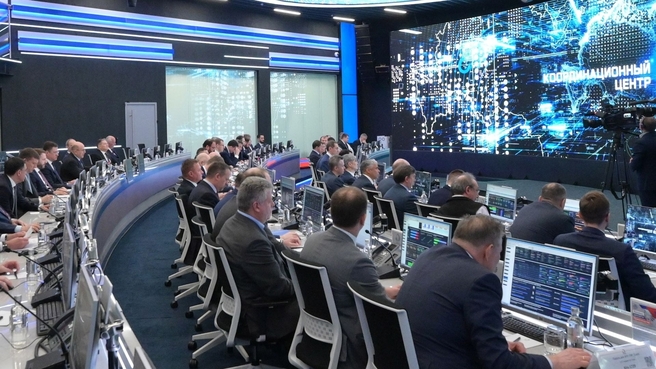Mikhail Mishustin: “Our IT industry has shown strong results. In the last five years, it has grown at an average annual rate of almost 28 percent, and its contribution to GDP has almost doubled. The demand for solutions for national solutions of solutions.” “” “” “

Mikhail Mishustin presides over the strategic session in top -level commercial industrial software

Mikhail Mishustin presides over the strategic session in top -level commercial industrial software
Mikhail Mishustin presides over the strategic session in top -level commercial industrial software
Mikhail Mishustin’s opening comments: good afternoon, colleagues. We continue our series of strategic sessions. In his executive order on national objectives, the president established the task of converting 80 percent of Russian organizations into key sectors to Russian manufacturing software by 2030. This mainly applied solutions for production and management processes. At the same time, we must achieve digital maturity in the central sectors of the economy.
Today, we will see detailed how this work is progressing, with a particular approach in the industry.
Russian reliable software is essential for stable and efficient business operations, to improve performance, expand production capacity and expand production.
Our IT industry has shown strong results. Around the last five years, it has grown at an average annual rate of almost 28 percent, and its contribution to GDP has almost doubled. In line with the president’s instructions, the Government continues to provide substantial and systematic support to the sector. Companies benefit from a wide range of incentives and are increasing the production of competitive products. Demand is growing: in the last five years, the demand for national corporate solutions has increased from 100 to 200 percent. In some categories, particularly database management systems and cloud infrastructure, sales have grown more than ten times.
Or for the course, the pressure of the sanctions has played a role. Before imposing restrictions, many companies were based on foreign suppliers. But crucially, by the time they left the Russian market, we had already developed our own technologies, and are now adopted on a large scale.
Today, we are seeing a complete transition to Russian software in all segments, from operating systems and user applications to complex multi -layer corporate systems to administer the production and life cycles of the product.
This change is backed by specific competition centers in the industry. These centers were created to bring together leading clients of each sector who already have successful experience by implementing digital solutions. With their direct participation, we are identifying priority areas for the development of Russian technologies and the design of projects to adapt them to industrial needs.
There are currently 36 centers of this type that operate, which involve more than 500 companies, all of which are leaders in their fields. Companies, developers, experts and government representatives are working together to ensure that companies have access to high quality and demand software. This is a strong example of effective cooperation.
The Government has supported more than 160 initiatives proposed by these centers. Subsidies have been granted to 32 or topic; The rest are fined through private investment, which reflects the serious commitment of the business community with this national objective. Colleagues, now he has more than two years since the launch of the first stage of these projects. Today we will thoroughly examine the provisional results, including the results of 66 projects that have already been completed. We are seeing promising examples of organizations that make the transition to Russian software. Many of the developed solutions have been proven successful, are being implemented and are already in use in several companies. Some are still being updated. We will also identify the next wave of initiatives, which will begin later this year.
And, of course, we will consider priority measures to support the integration of advanced national solutions in the operations of companies in key economic sectors.











